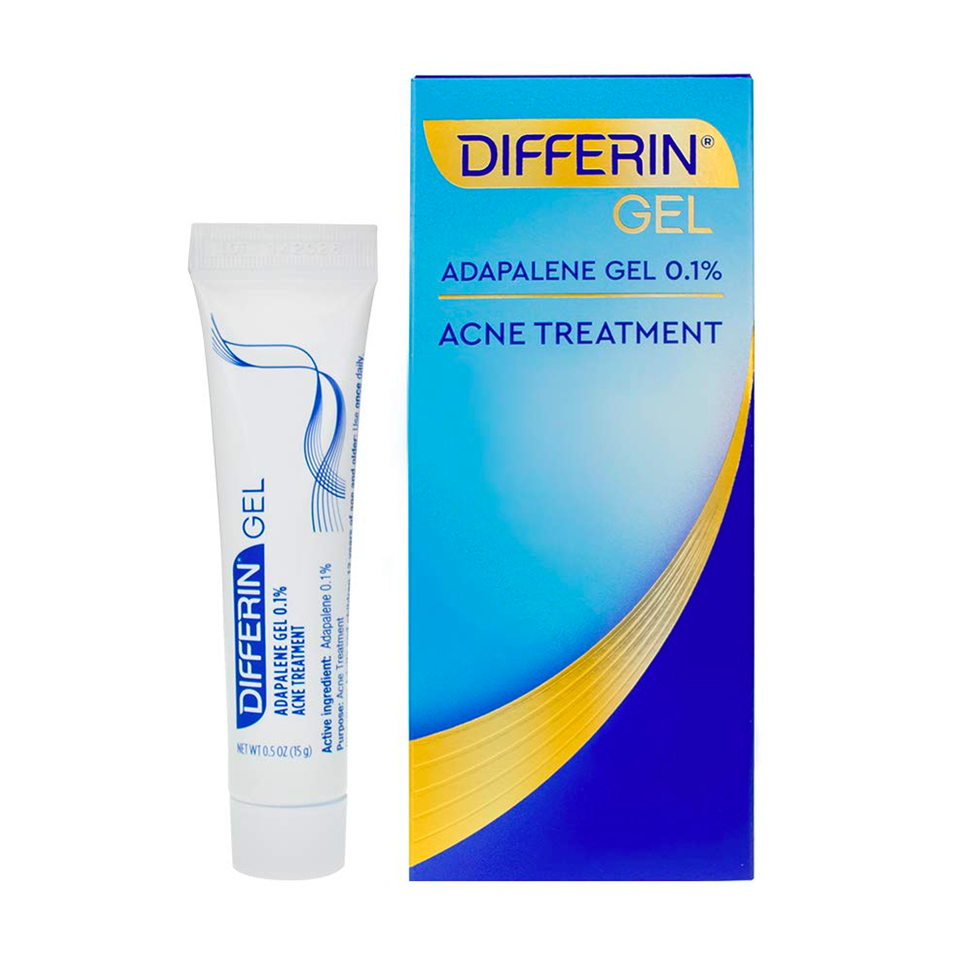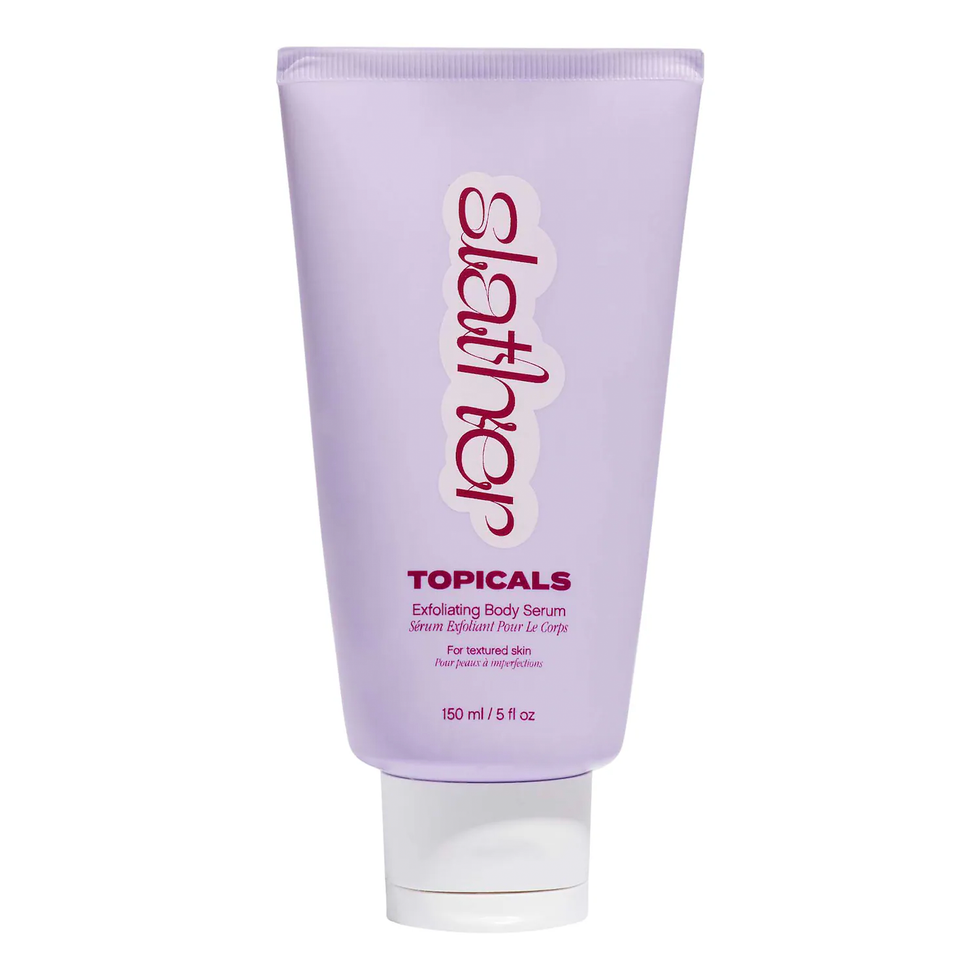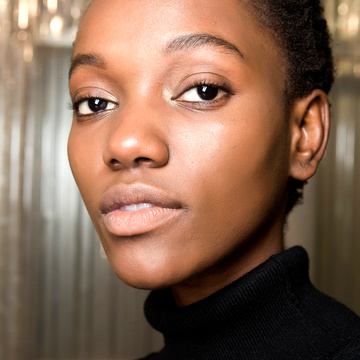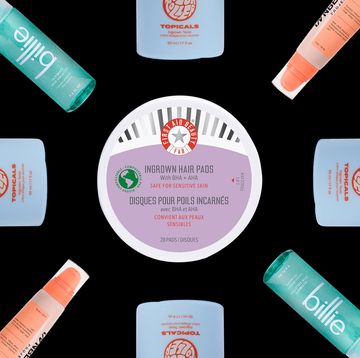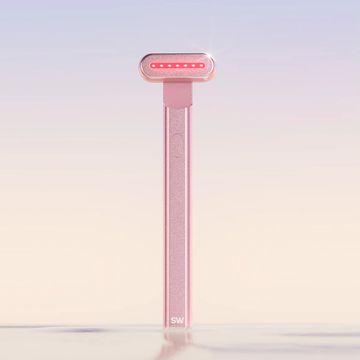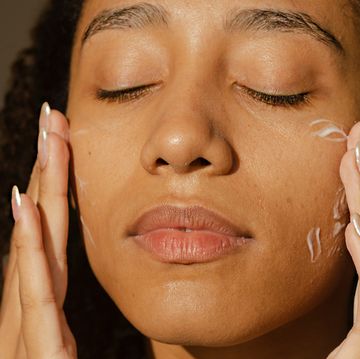How to Get Rid of Stretch Marks, According to Dermatologists in 2024
At-home treatments and in-office procedures to smooth, brighten, and firm.
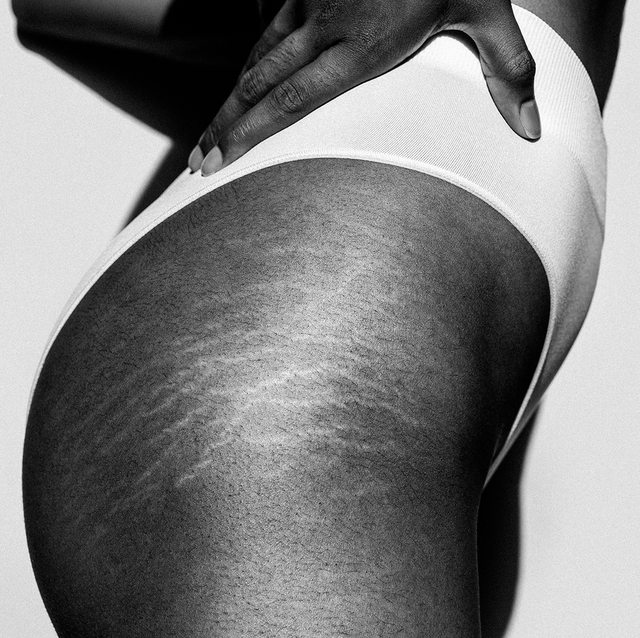
We may earn commission from links on this page, but we only recommend products we love. Promise.
Heads up: 80 percent of Americans, including me, have stretch marks. They’re truly so normal and nothing to be ashamed of (and hopefully you aren’t!). And though I’m fine with a bunch of mine, I do prefer a smooth, even look on my stomach, which is why I’ve tried dozens of stretch-mark creams and stretch-mark oils over the years…with virtually no success. But when I finally asked dermatologists and plastic surgeons—six of them, to be exact—how to get rid of stretch marks, along with the best stretch-mark products that really work, I realized my approach was all wrong.
Let me explain. Stretch marks occur when the collagen and elastin in your skin tear from stretching (like rapid weight fluctuations), creating a scar. "The skin has undergone mild damage as a result of natural, normal circumstances," plastic surgeon John Kim, MD, previously told Cosmo. Because of this damage, stretch marks are notoriously difficult to treat, especially at home. Even "office-based procedures won't remove stretch marks completely," Dr. Kim noted, "but they can reduce the size and noticeability of the stretch mark."
Not all hope is lost though. To get rid of stretch marks, you either have to see a dermatologist for professional and/or prescription solutions, or you need to diligently stick with an at-home treatment for months to see only some results. But don’t worry—I got all the info you need to know from the experts about how to get rid of stretch marks, from the best stretch-mark-removal treatments to what causes stretch marks in the first place.
Our top picks to get rid of stretch marks in 2024:
Now keep reading for more expert info on how to get rid of stretch marks, whether it’s possible to remove stretch marks naturally, and if you can even prevent stretch marks to begin with.
Pros
Smoothes textured stretch marks
Gel texture absorbs quickly
Cons
Can irritate your skin at first (so start slow)
Retinoids—like the adapalene found in Differin—”sink into your skin to speed up cell turnover, causing your body to churn out fresher, smoother, less wrinkled skin over time,” dermatologist Mona Gohara, MD, previously told Cosmo. Which is why they’re the best over-the-counter treatment for smoothing bumpy, textured stretch marks at home.
Just massage a dot of retinoid over your stretch marks one night a week for one week, then two nights a week for two weeks, then three nights a week for three weeks, slowly working your way up to every other night indefinitely. It’ll take a while to see results (think: three months, at least), but it is a simple addition to your routine and one that’s available at drugstores.
Cosmo review: "I’ve been using Differin on my stretch marks for the last four months, and I’ve noticed a huge difference in the texture of my raised marks. My massage therapist even noticed that they looked less visible the last time I was in. It sinks in quickly, and it’s easy to remember to apply with my nighttime routine since I use it the same days as I apply Differin to my face." — Beth Gillette, beauty editor
Pros
Works faster than over-the-counter retinoids
Cons
Incredibly strong and can cause irritation and flaking at first
Serious about fading your stretch marks? Talk to your dermatologist—whether in-person or via a teledermatology service instead, like Apostrophe or Curology—about a prescription for tretinoin, one of the strongest and most effective retinoids. It speeds up cell turnover, which churns out fresher, smoother skin over time to help reduce the look and feel of your stretch marks. Plus, it boosts collagen and elastin production, which not only makes your skin look firmer, but can help prevent new stretch marks from forming in the future (because your skin will be a bit stronger and more elastic).
You’ll need to smooth it over your stretch marks consistently for about three months to notice a difference. But just know that tretinoin is potent, so you should only use it once or twice a week (at night), until your skin can tolerate using it three times a week. And always follow with a rich body lotion and a sunscreen of SPF 30 or higher in the morning.
Glowing customer review: “I used to get this product and strength from a plastic surgeon's office. I moved to another state and didn't have that connection anymore. So, I ordered this hoping it would be the same quality... It Is! The product is effective, and the pump is clean and not wasteful!”
Pros
Helps smooth bumpy stretch marks with AHAs and retinol
Can potentially fade the look of stretch marks over time
Cons
A little too much product comes out sometimes
If your skin is too sensitive for strong retinoids like adapalene or tretinoin, you can try a retinol body lotion, says dermatologist Arash Akhavan, MD. This one from Topicals is spiked with an encapsulated retinol which will still stimulate collagen production to generate new, slightly thicker skin over time, but with fewer irritating side effects.
But that's not all, because it's also loaded with AHAs (namely, glycolic and lactic acid) to help slough off dead skin and give your skin a smoother look. In my experience, this has seriously flattened my textured, raised stretch marks on my stomach, while the retinol in the formula majorly helps fade the red/silver look over time. Even better: It's surprisingly lightweight and sinks in quickly (shout-out the serum texture), yet still feels hella moisturizing and soothing to combat any potential dryness from all the actives in the formula.
Glowing customer review: "I’m in love with this product! Keeps my skin smooth throughout the day and is helping smooth rough spots on my legs."
Pros
Sinks in quickly but leaves my skin feeling hydrated and plump
I love the pump bottle for easy use
Cons
Might not be rich enough for ultra-dry or cracked skin
Confession: A cream won't get rid of or prevent stretch marks (sorry). But moisturized skin is typically way more elastic, making it a bit stronger and less susceptible to stretch marks in the long run. I'm a huge fan of this formula from Nivea that uses a hefty dose of almond oil, which dermatologist Luigi L. Polla, MD, recommends for stretch marks because it’s lightweight and locks in hydration. I massage this cream all over my body in the morning right after showering when my skin is still wet (which can help with absorption a bit), as well as just before bed. It sinks in quickly to avoid that sticky feeling, making me way more likely to use it consistently.
Glowing customer review: "I have tried many skin products for over a year trying all the brands out there and finding the new that really work and not fake reviews. I absolutely love this one! It’s true about the hydration quality of your skin! My skin is very dry and this lotion definitely makes a difference! My skin is hydrated and not dry anymore! It smells amazing and feel amazing! It leaves your skin with a glow and not oily or sticky! It truly works!"
Pros
Similar method to professional treatments
Cons
Can leave your skin a little irritated for a few hours
“At-home microdermabrasion is an exfoliating treatment that takes off the outer layers of dead skin to improve your skin's texture, pore size, and pigmentation," dermatologist Morgan Rabach, MD, has previously told Cosmo. But it’s especially great for smoothing bumpy stretch marks. The PMD is a handheld device that uses diamond-coated tips to buff away dead skin with a vacuum-like suction to lift it off, leaving your skin softer and smoother over time.
Try incorporating this treatment once weekly on dry, clean skin for three months. Just know that microdermabrasion isn’t a surefire way to get rid of stretch marks (nothing is!), so your results will vary depending on the severity of your scars. If you want faster results, you could also try an in-office microdermabrasion treatment, which uses grittier diamond-tips and stronger suction that has to be administered by a professional, but has no downtime.
Glowing customer review: “I absolutely love this device and would recommend it to all my skincare lovers out there. It makes my skin incredibly smooth, and I see virtually instant results in making my skin appear brighter. It’s very simple to use and not painful.”
Pros
Available in six needle lengths depending on your scars
Cons
Can be painful
In-office microneedling (whether combined with radiofrequency or not) can be expensive. If you’re looking for a cheaper at-home option, try this dermarolling tool, which uses a roller covered in tiny needles that micro-puncture your skin to stimulate collagen and elastin production to help soften stretch marks over time. If you’re dealing with old or textured scars, you’ll need to treat clean, dry skin with the 1.5 or 2mm length once a week for at least two months to notice a difference.
Just know that because those needle lengths are quite long for at-home use, they can be a little painful and irritating. So talk to your dermatologist before trying dermarolling (or let’s be real, anything on this list), especially if you have sensitive skin.
Glowing customer review: “I can already see great improvement in my stretch marks in just a week. I purchased 1.0mm to use on my shoulder area where I have small stretch marks. I recommend applying ice after you roll it helps with the redness.”
Pros
Has a thin, slippy texture that’s great for massage
Sinks in without leaving a residue on your skin
Cons
Some reviewers find the rosemary scent too strong
Fun fact: Small-scale research has shown that regular 15-minute oil massages can potentially help to prevent stretch marks (specifically in pregnancy, but hey, skin is skin, so I’ll try it). “Studies have shown that taking the time to massage the product into your skin may make it more effective,” dermatologist Hadley King, MD, has previously told Cosmo.
So while Bio-Oil itself doesn’t have any ingredients proven to fade or prevent stretch marks, it’s still a great massage oil to help moisturize and soothe your stretched skin because it’s so slippery. The lightweight consistency absorbs fully once you smooth it on, and it’s also filled with vitamin E that contains fatty acids to keep your skin hydrated and plump.
Glowing customer review: “I was recommended this product from a friend who used it for her stretch marks, so I decided to give it a try. While I don’t expect miracles as my kids are now 4 and 19 months, I really do enjoy putting this oil on my stomach and giving myself a nice massage.”
Jergens Natural Glow Instant Sun Body Mousse

Pros
Suitable for light to dark skin tones
Cons
Only lasts one to three days, according to some testers
If you want to make your stretch marks less noticeable asap, layer on this self-tanner to help blend your scars with your skin for a few days. This drugstore classic has a buildable color that adds a golden tint to light, medium, and dark skin tones (for real, this one went viral on Tiktok for how well it blends on deep, melanin-rich skin tones) and lasts for a few days. Just make sure to buff it onto your stretch marks in circular motions with a tanning mitt to avoid streaks and the tan sinking into fine lines or ridges like your scars.
Glowing customer review: “This product is very long-lasting, and I love the golden tone of it afterward. It's not only for people who want a nice tan, but it can also work great for melanated people who want a more even skin tone for those nice pictures.”
Fenty Beauty Body Sauce Body Luminizing Tint

Pros
Reviewers love how the tint smooths and blurs skin
A 'Cosmo' Beauty Award Winner
Cons
Has chunky sparkles that can transfer
Looking to neutralize your stretch marks quickly? Smooth on this luminous body tint from Fenty Beauty to help blend your marks into your skin while leaving you looking glowy. And because the formula is available in seven shades (ranging from light to deep) in a mix of both golden and neutral undertones, it'll never look obvious or makeup-y. Just stipple it on with a makeup brush or your fingers and live your life. And if you want a longer-lasting, matte finish, dust over it with setting powder.
Glowing customer review: "This is amazing. It evens out your skin, looks beautiful, and doesn’t transfer. I was out in the Florida heat sweating, and it did not come off!"
Smooth stretch marks with resurfacing lasers
Resurfacing lasers are one of the best options to smooth textured stretch marks and discoloration, says Dr. Akhavan. There are two different types of laser treatments for stretch marks that your dermatologist may recommend: Ablative remodeling lasers and non-ablative lasers.
Ablative lasers
Ablative lasers, like Erbium YAG, fractional CO2 lasers, or nonfractionated lasers including Fraxel Re:Pair—use intense wavelengths of light to destroy the upper layers of your skin, triggering the formation of new skin that’s smoother and brighter. Ablative lasers are considered the most intense and painful of laser treatments, and they usually require five to seven days of downtime afterward, due to swelling, inflammation, and peeling. Treatments are on the longer end (around an hour to an hour and a half), but require fewer sessions to treat stretch marks (usually one to three) than non-ablative lasers, which usually require five to eight.
Non-ablative lasers
Non-ablative lasers (like Nd:YAG lasers, fractional and nonfractional lasers, and pulsed-dye lasers, —which target your blood vessels, i.e. reddish or purple stretch marks) use precise wavelengths of light that emit heat into the lower layers of your skin to damage the skin and trigger collagen production and repair. Dr. Akhavan uses the Icon 1540 Fractional Laser for stretch marks in his practice, a fractional laser that’s been shown to give a 50 to 75 percent improvement in stretch marks after a few sessions. Non-ablative lasers are known to be less painful, and they only have one to three days of downtime, generally. But you’ll need between five and eight treatments spaced a month apart to completely see results (smooth, faded scars).
Either way, if you’re considering a laser treatment, talk to your dermatologist to find out which laser will be best for your needs. If you’ve had your bumpy stretch marks since puberty, then you might benefit from one or two procedures with an ablative laser to resurface your skin. But if you’ve got newer, bright-red stretch marks, a non-ablative laser might be a better bit for you.
Try microneedling with radiofrequency
As a refresher, radiofrequency (RF) treatments use heat to penetrate the middle layers of your skin and trigger fresh collagen production. And when you pair RF with microneedling (which also triggers a wound-healing response by creating tiny punctures in your skin), you’ve got a gold-star, collagen-boosting treatment that can smooth textured stretch marks and fade discoloration over time.
The two most common types of microneedling with RF are Morpheus8 and Vivace, both of which involve “stamping” the top layers of the skin with tiny needles that emit radiofrequency. Each treatment will leave your skin inflamed for a few days to a week, but you’ll start to notice smoother, firmer skin over time. Just note that you’ll need three to six sessions depending on how textured and old your stretch marks are (newer stretch marks are easier to remove).
Boost collagen to get rid of stretch marks
Dr. Akhavan also recommends laser skin-tightening treatments for getting rid of stretch marks. Why? Because these tightening treatments deliver pulses of light energy into your skin to trick your cells into thinking they're injured, he says, which causes your body's natural healing process to kick in. This “wound-healing process” triggers your cells to create new collagen in the area and firm skin, helping to lighten and smooth your stretch marks over time.
Intense-pulsed light (IPL) is a common treatment for stretch marks in fair-to-medium skin, because it uses short blasts of high-intensity light to help smooth texture, fade hyperpigmentation, and firm skin over time. It can take up to six treatments (at $150 to $500 per session) to see results, but there tends to be little downtime and discomfort. Just note that most IPL technologies are not yet safe for use on dark or deep skin, as the wavelength targets dark pigments and could potentially burn your skin, so talk to your doctor beforehand to make sure you’re a candidate.
Another option is ultrasound therapy, like Ultherapy (sometimes called Ulthera) or Sofwave, which uses ultrasound waves to heat deep layers under your skin to trigger collagen production. There’s no downtime with ultrasound, but you may experience some pain during your treatment (especially with Ultherapy, which reaches deeper layers of your skin than Sofwave), but most patients can simply ask for numbing cream ahead of time to help mitigate discomfort.
Note: Ultrasound therapy is safe for all skin types and tones, and most dermatologists will recommend two 30-minute treatments spaced four weeks apart to treat stretch marks. Just know they're not exactly cheap: Treatments can cost anywhere from $1,500 to $2,500 each, depending on where you’re located, your stretch marks’ size, and your provider.
Fade light-colored stretch marks with Excimer
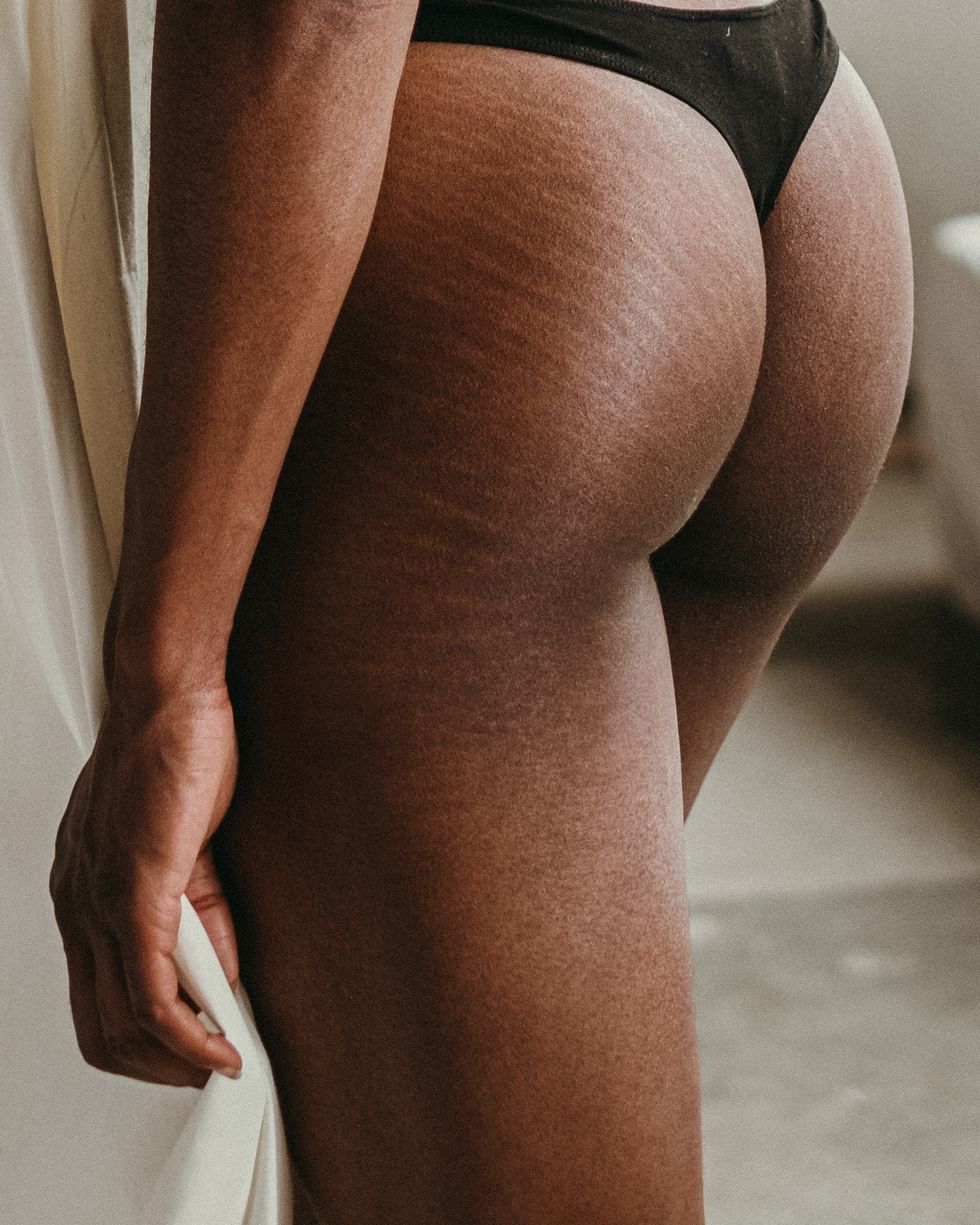
Most people turn to laser treatments to lighten dark spots, discoloration, and hyperpigmentation, which is why they're so popular for treating dark-colored stretch marks. But what if your stretch marks are already lighter than your skin tone? That's where the Excimer laser comes in. It actually darkens skin by increasing melanin production via a narrow band of ultraviolet light, which can help deepen the color of light scars so that they fade into your skin color.
Currently, Excimer is most popular for treating psoriasis and vitiligo, but many dermatologists are finding that it’s also a great choice for light stretch marks. As with any laser, you’ll need multiple treatments to see results (generally five to eight, depending on your stretch marks). And it can definitely be costly—expect to pay anywhere from $1,000 to $2,500 per treatment, based on your location, provider, and your treatment area’s size.
Smooth skin with injectable collagen stimulators
If your stretch marks are raised, your doctor might recommend an injection that can stimulate collagen to thicken your skin and help smooth the bumpy texture. Two common injections include Radiesse and Sculptra which can soften crepiness and stretch marks, resulting in firmer skin. It’s important to note though that these injections aren’t permanent, though: Radiesse lasts about a year, while Sculptra can last up to two years.
You’ll also need multiple rounds of treatment, and you likely won’t see a major difference for three to four months while your skin builds up the new collagen. But these treatments can be combined with lasers, microneedling, or microdermabrasion to improve both the texture and discoloration of your scars in a shorter period of time than, say, retinoids or topical creams in general.
What is the cause of stretch marks?

“The cause of stretch marks is your skin stretching and your elastin and collagen breaking, most commonly during periods of rapid weight fluctuations,” says Dr. Polla. This often occurs during growth spurts, pregnancy, puberty, weight gain, or increased muscle mass when your skin suddenly stretches and causes the collagen under your skin to tear away from each other, explains Dr. Arkhavan. So when your skin stops growing, "it can look wrinkled and lined because it’s not supported by the same collagen structure underneath,” says Dr. Akhavan.
How can I get rid of stretch marks permanently?

There is no way to completely get rid of stretch marks permanently, says Dr. Akhavan. But dermatologists offer two types of treatments to help get rid of stretch marks: at-home treatments and in-office procedures. Your dermatologist will be able to decide which option is best for you, your goals, and your budget. But here’s a quick breakdown of what they might suggest:
At-home treatments to get rid of stretch marks:
- Prescription tretinoin
- Over-the-counter retinoids, like adapalene or 0.1 percent retinol-based body lotions
- At-home devices, like dermarolling or microdermabrasion
Professional in-office treatments to get rid of stretch marks:
- Lasers, like the Icon 1540 fractional laser, IPL, PDL, fractional CO2 lasers, Fraxel, and Excimer
- Microneedling with radiofrequency, including Morpheus8, Vivace, and Thermage
- Microdermabrasion
- Collagen-stimulating injections, such as Radiesse and Sculptra
Your doctor will also likely suggest a body skincare routine that includes moisturizing your skin twice a day with a rich body cream, as the more hydrated your skin is, the more elastic and resistant to stretching and scarring it’ll be.
How long does it take for stretch marks to fade?

Stretch marks can take anywhere from months to years to fade on their own, depending on their location, texture, and color. If your stretch marks appear dark-pink, red, or purple at first, they will “take 12 to 18 months to fade to the much lighter white-ish color of an ‘old’ stretch mark,” says Dr. Polla. All that to say, some stretch marks will remain red/purple/brown and never fade to white or silver.
Also, if you do try one of the above stretch mark removal treatments, you won’t see results immediately, says Dr. Akhavan. Everything from professional procedures to at-home lotions will take at least three months to notice fading, though you can often expect even longer.
How can I prevent stretch marks from forming?

There’s no way to prevent stretch marks from forming, because stretch marks can be genetic, and weight fluctuations are inevitable. But the best plan of action is to moisturize your body twice a day with a cream or oil to strengthen your skin, making it more elastic to avoid stretching and tearing. Look for creams that contain oils with a small enough molecular size to improve your moisture levels, like almond oil, shea butter, and argan oil. You can also incorporate a collagen-boosting product, like a retinol body lotion, collagen cream, or peptide-based body moisturizer.
How to choose the best stretch mark removal treatment:

Talk to your dermatologist.
Your dermatologist can help you determine whether you should opt for an in-office procedure, a prescription topical, or an at-home treatment, depending on what you’re hoping to achieve and the texture, color, and age of your stretch marks. Your doctor might also combine treatments, like a collagen-stimulator injection with a laser treatment, or topical products used in between your laser appointments.
Consider your budget.
Obviously, at-home stretch mark treatments will be a lot less expensive than three to six sessions of a professional laser or microneedling procedure. But when you’re choosing a stretch mark removal treatment, discuss with your doctor how much you’re willing to spend. An over-the-counter retinoid like adapalene or a retinol body lotion will cost less than a tretinoin prescription. If you’re looking for an in-office result without spending too much, you could try an at-home microdermabrasion tool or derma-roller.
In-office procedures will also vary in price, though. A microdermabrasion treatment averages $100 to $200 a session, while one microneedling with RF treatment can range from $250 to $1,000. And laser facials vary too, with ultrasound and ablative lasers costing the most and IPL generally costing the least.
Choose products with proven ingredients.
If you’re going the route of at-home treatments, skip the stretch mark-removal creams and opt for a retinol-based gel or lotion instead, which can help smooth your skin and fade stretch marks over time. And, unlike creams and oils that require twice daily application (to see minimal results over a long period of time), you only have to use a retinoid three times a week, which is a lot easier to maintain in the long run while you’re waiting for smoother, brighter skin.
Meet the experts:

- Luigi L. Polla, MD, is a board-certified dermatologist and the founder of the Forever Institut in Geneva, SW. He is also the founder of the skincare brand Alchimie Forever, which he developed for patients to use post-procedures.
- Arash Akhavan, MD, is a board-certified dermatologist at The Dermatology and Laser Group in New York, NY and a faculty member at The Mount Sinai Medical Center. He specializes in non-invasive and minimally invasive cosmetic procedures as well as skin cancer prevention and treatment.
- Hadley King, MD, is a board-certified dermatologist in New York, NY, specializing in cosmetic and medical dermatology. She is also the clinical instructor of dermatology at the Weill Medical College of Cornell University. She was previously interviewed about stretch mark creams.
- Morgan Rabach, MD, is a board-certified dermatologist and the co-founder of LM Medical in New York, NY. Dr. Rabach specializes in cosmetic dermatology and the elimination of acne scars. She was previously interviewed about microdermabrasion.
- Mona Gohara, MD, is a board-certified dermatologist at her own practice in Hamden, CT. She’s also the president of the Women's Dermatologic Society, and associate clinical professor at Yale. Her areas of expertise include medical and surgical dermatology and skin of color. She was previously interviewed about retinol body lotions.
- John Kim, MD, is a board-certified plastic surgeon practicing at Northwestern Memorial Hospital in Chicago, IL. His specialty is cosmetic surgery of the breast and body. Cosmo interviewed him previously about stretch mark creams.
Beth Gillette is the beauty editor at Cosmopolitan, where she covers skincare, makeup, hair, nails, and more across digital and print. She can generally be found in bright eyeshadow furiously typing her latest feature or hemming and hawing about a new product you "have to try." Prior to Cosmopolitan, she wrote and edited beauty content as an Editor at The Everygirl for four years. Follow her on Instagram for makeup selfies and a new hair 'do every few months.

Siena Gagliano is the associate editor at Cosmopolitan, where she primarily covers beauty, fashion, travel, and lifestyle. Wanna know how to get the best brows of your life? Gotchu. What about how to find the best fashion deals of the season, the softest sheets on the market, or exactly how to use retinol without irritating your skin? Check, check, and check. Before joining Cosmopolitan, Siena was a writer at Bustle and several other media outlets. As her 2024 goal, she has vowed to find the best (extra) dirty martini NYC has to offer—and yes, that means ~attempting~ to try every cute cocktail spot in the city (hit her up with some recs, pls). Follow Siena on Instagram for a behind-the-scenes look at that magazine life.
Watch Next


Found: 10 Mineral Sunscreens That Don't Suck

Finally, Something Got Rid of My Double Chin

Want Glowy Skin? Try These K-Beauty Products

FYI, These Creams Will *Transform* Your Dry Hands
